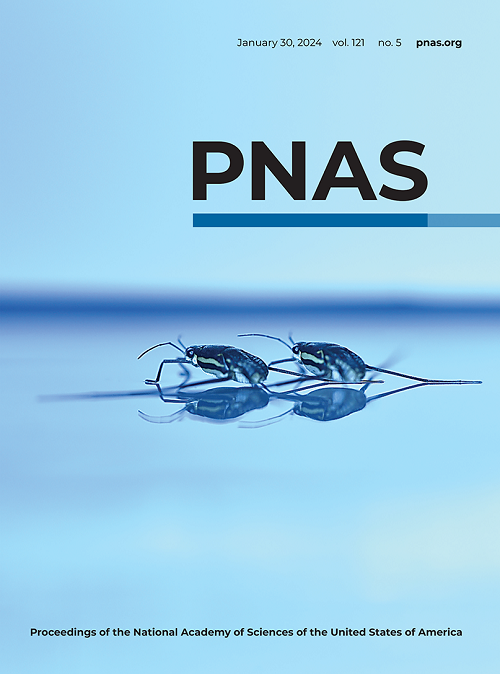Signaling networks in cancer stromal senescent cells establish malignant microenvironment
IF 9.4
1区 综合性期刊
Q1 MULTIDISCIPLINARY SCIENCES
Proceedings of the National Academy of Sciences of the United States of America
Pub Date : 2025-04-01
DOI:10.1073/pnas.2412818122
引用次数: 0
Abstract
The tumor microenvironment (TME) encompasses various cell types, blood and lymphatic vessels, and noncellular constituents like extracellular matrix (ECM) and cytokines. These intricate interactions between cellular and noncellular components contribute to the development of a malignant TME, such as immunosuppressive, desmoplastic, angiogenic conditions, and the formation of a niche for cancer stem cells, but there is limited understanding of the specific subtypes of stromal cells involved in this process. Here, we utilized p16-Cre癌症基质衰老细胞的信号网络建立了恶性微环境
本文章由计算机程序翻译,如有差异,请以英文原文为准。
求助全文
约1分钟内获得全文
求助全文
来源期刊
CiteScore
19.00
自引率
0.90%
发文量
3575
审稿时长
2.5 months
期刊介绍:
The Proceedings of the National Academy of Sciences (PNAS), a peer-reviewed journal of the National Academy of Sciences (NAS), serves as an authoritative source for high-impact, original research across the biological, physical, and social sciences. With a global scope, the journal welcomes submissions from researchers worldwide, making it an inclusive platform for advancing scientific knowledge.

 求助内容:
求助内容: 应助结果提醒方式:
应助结果提醒方式:


